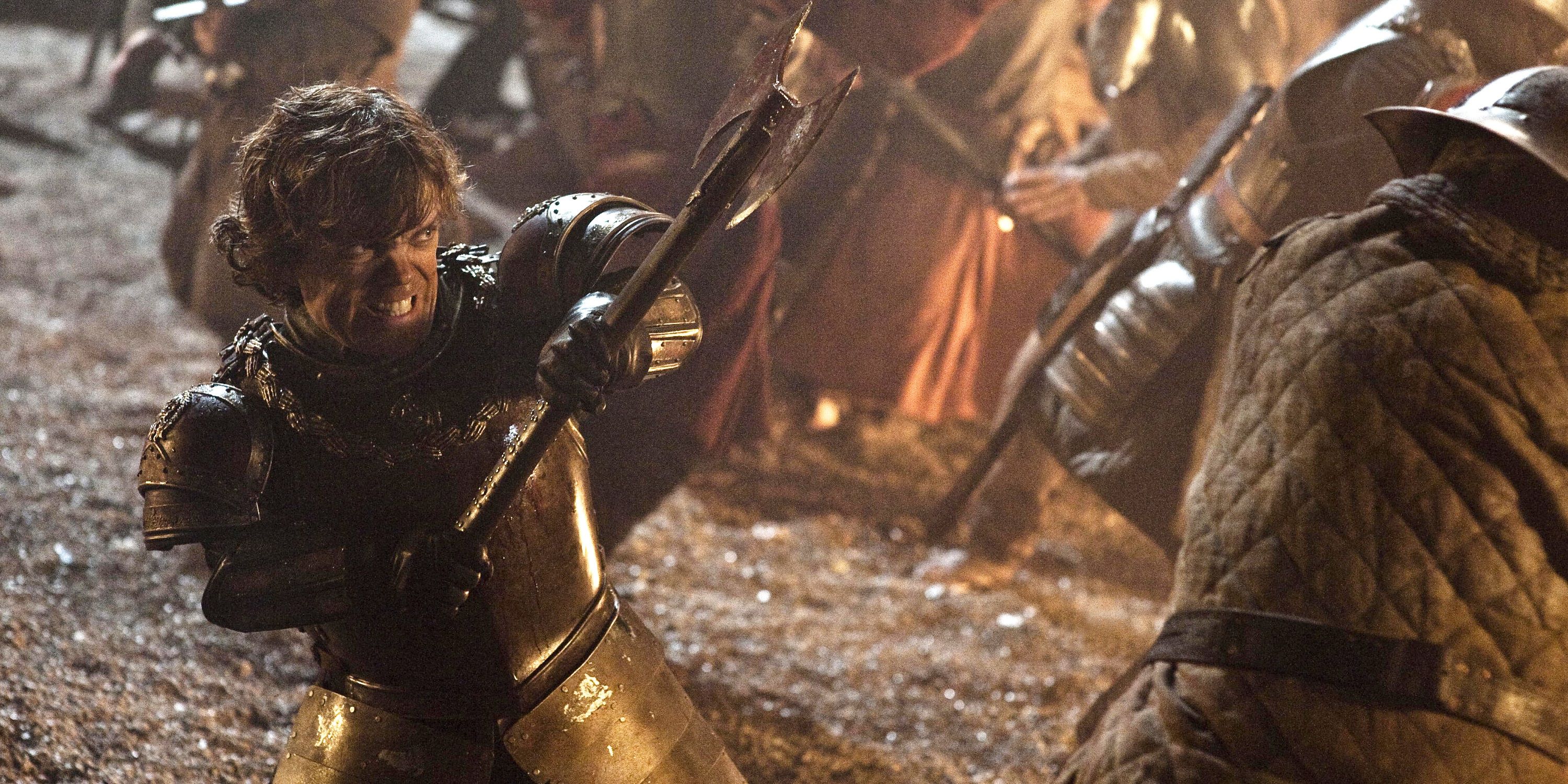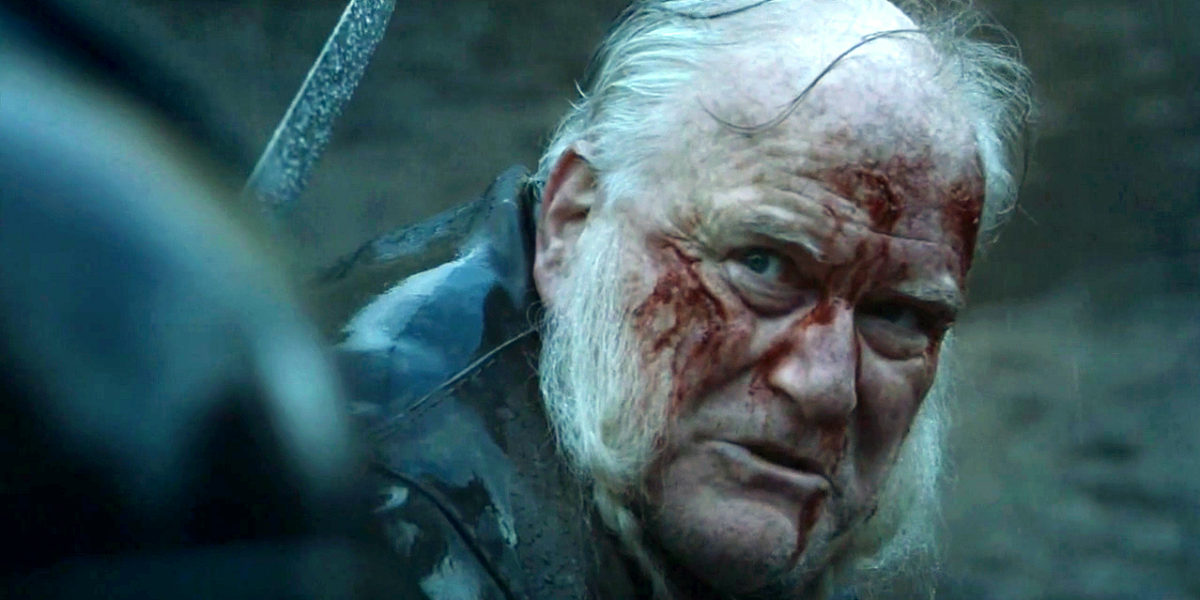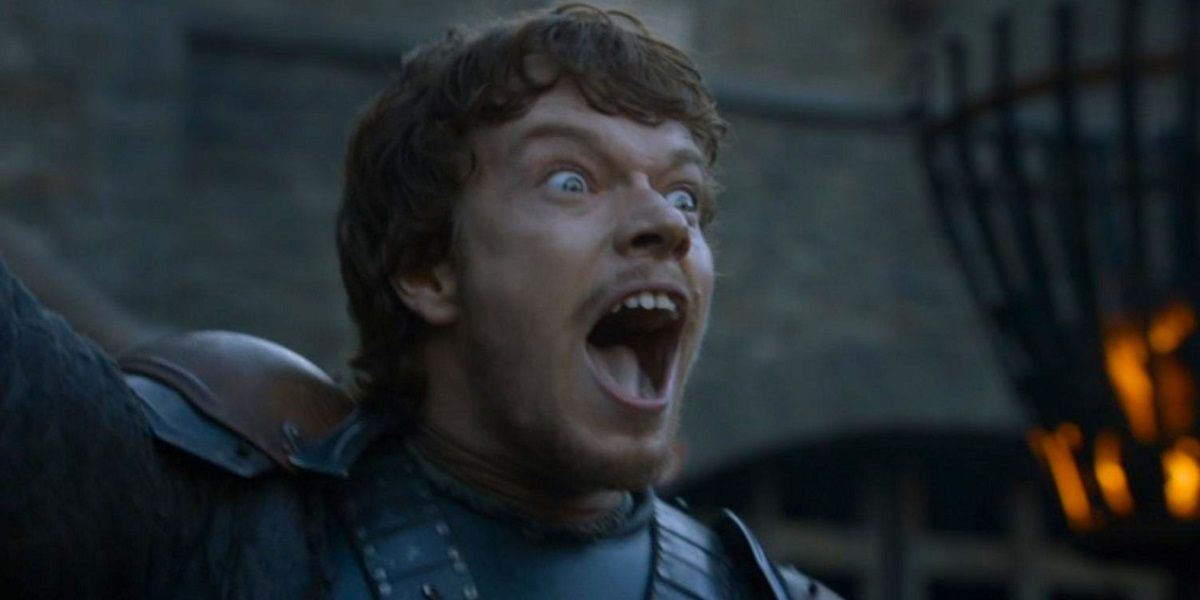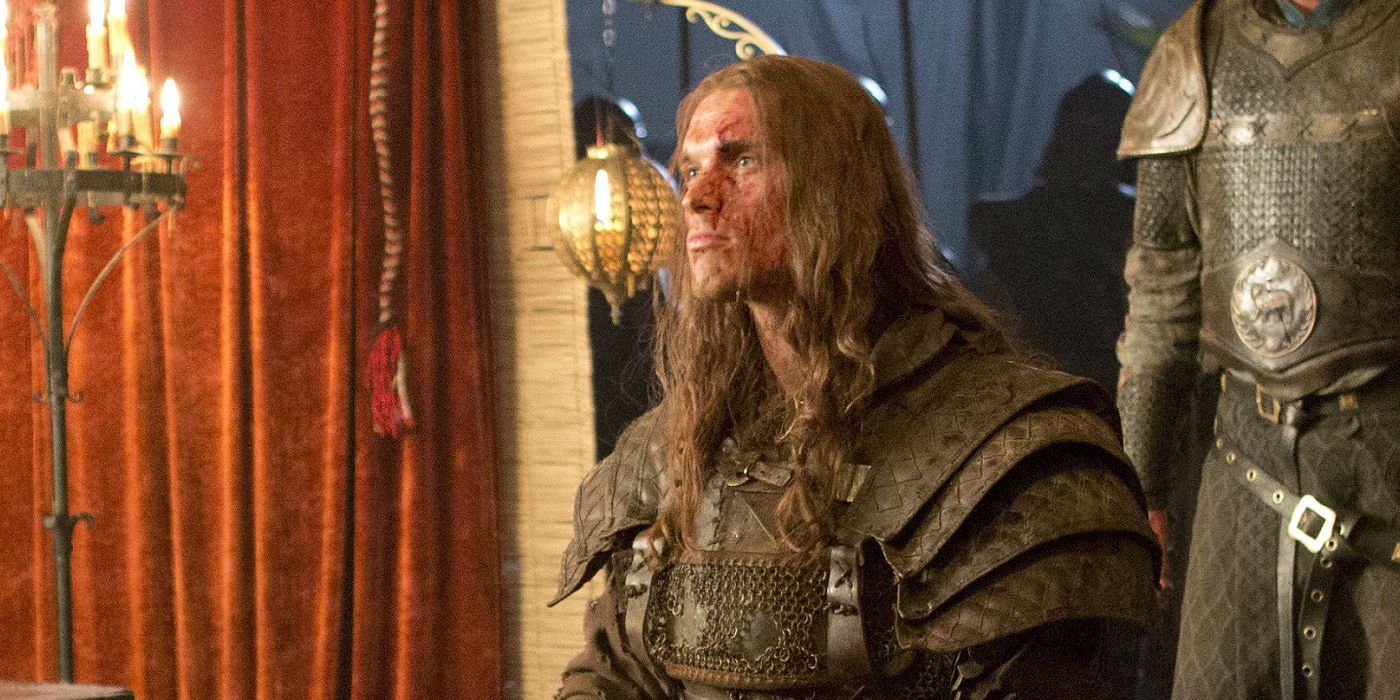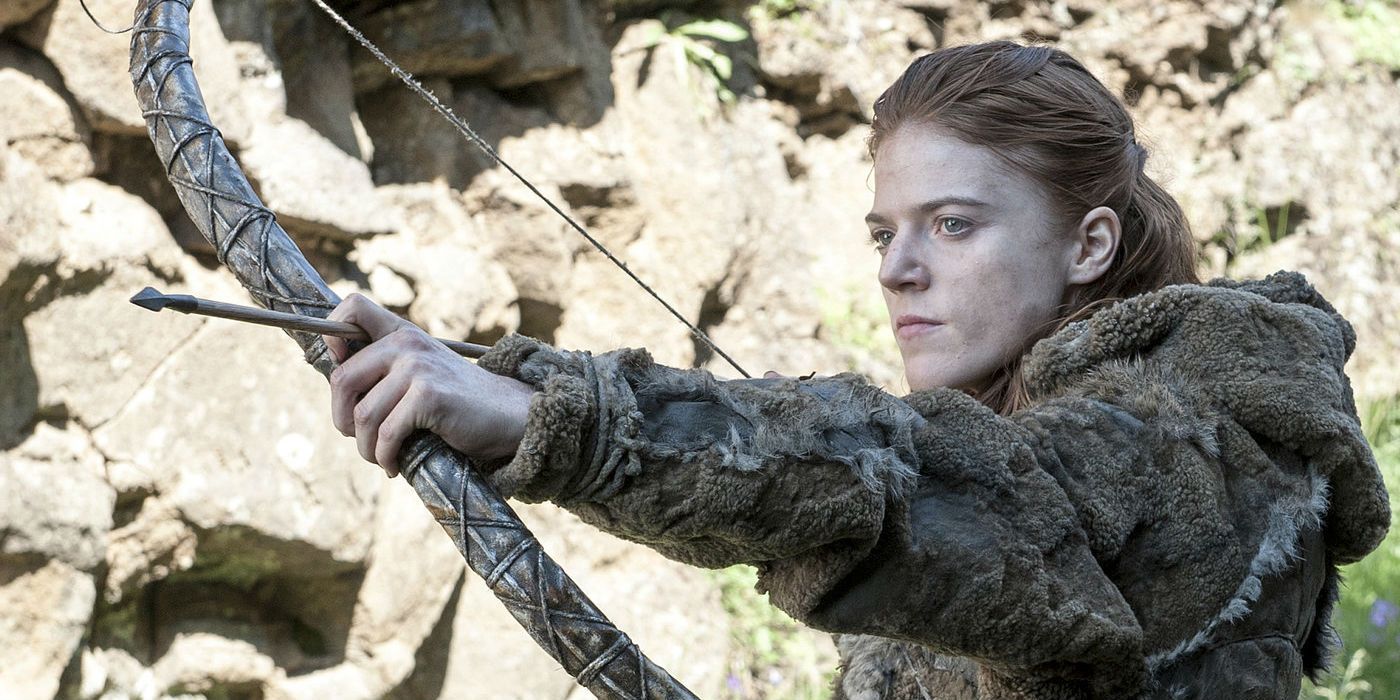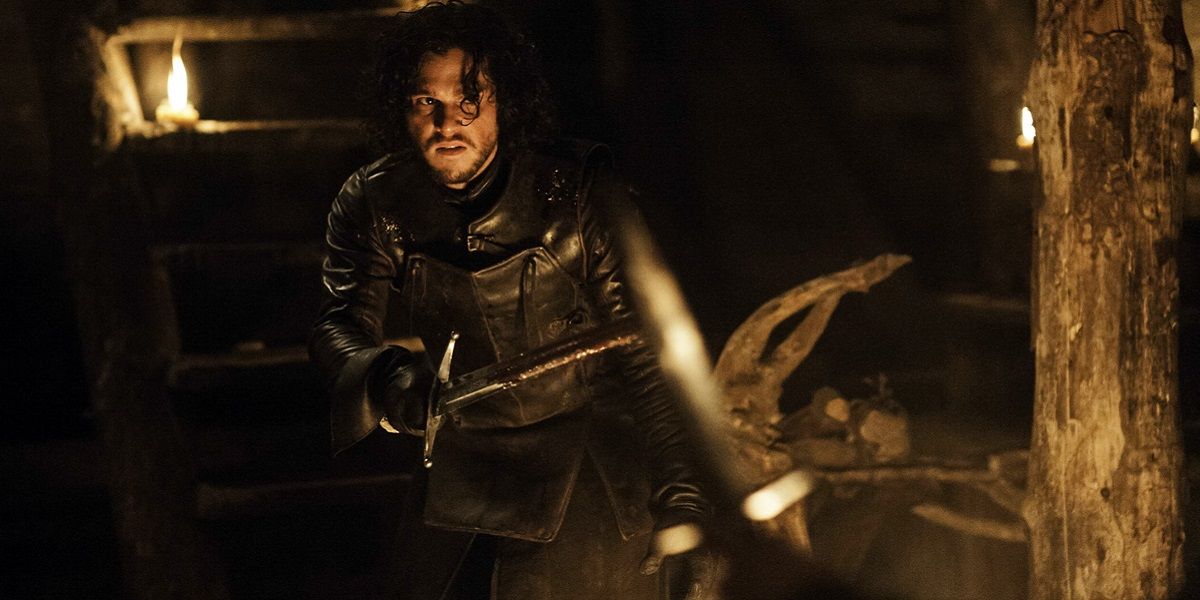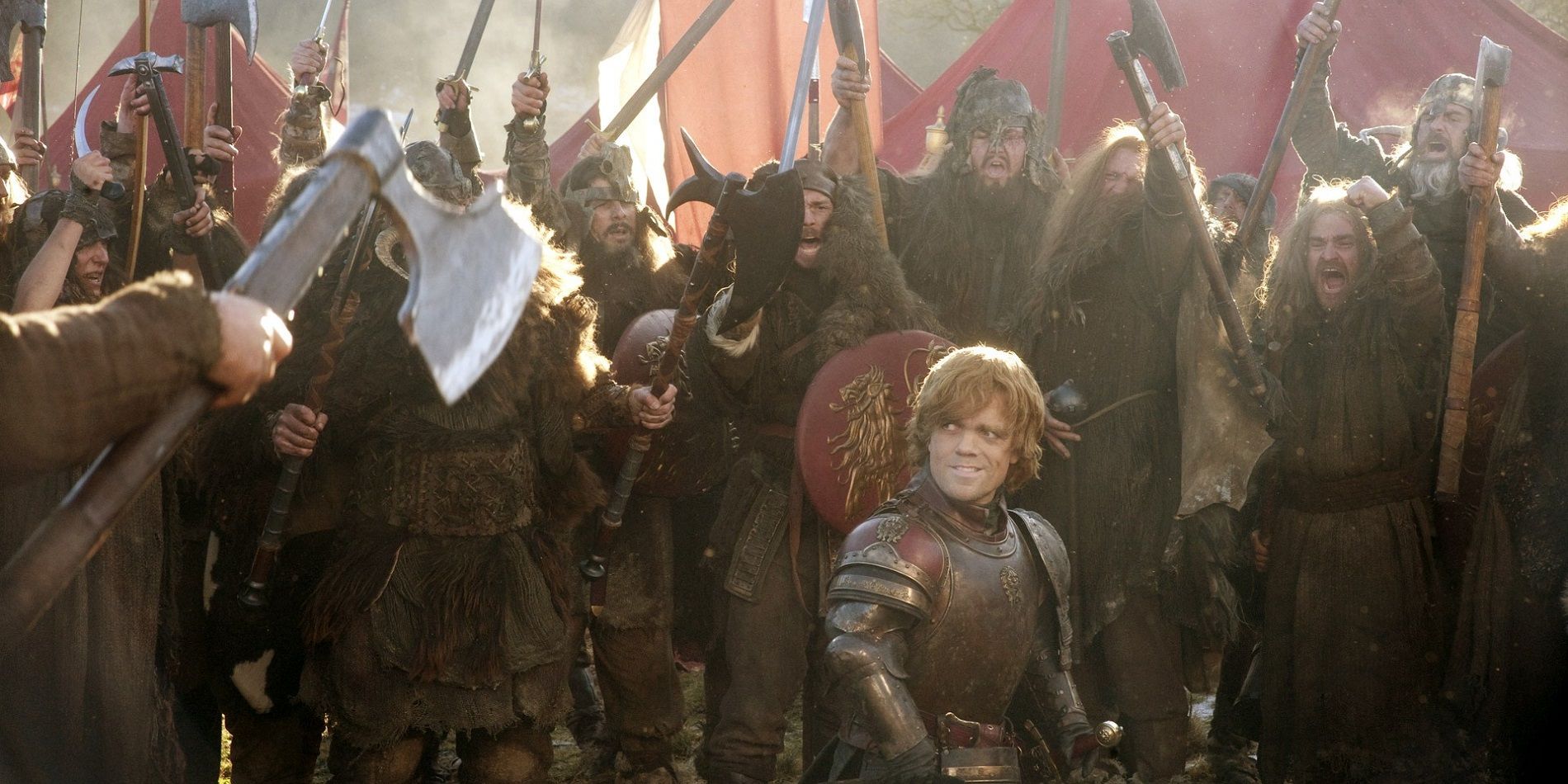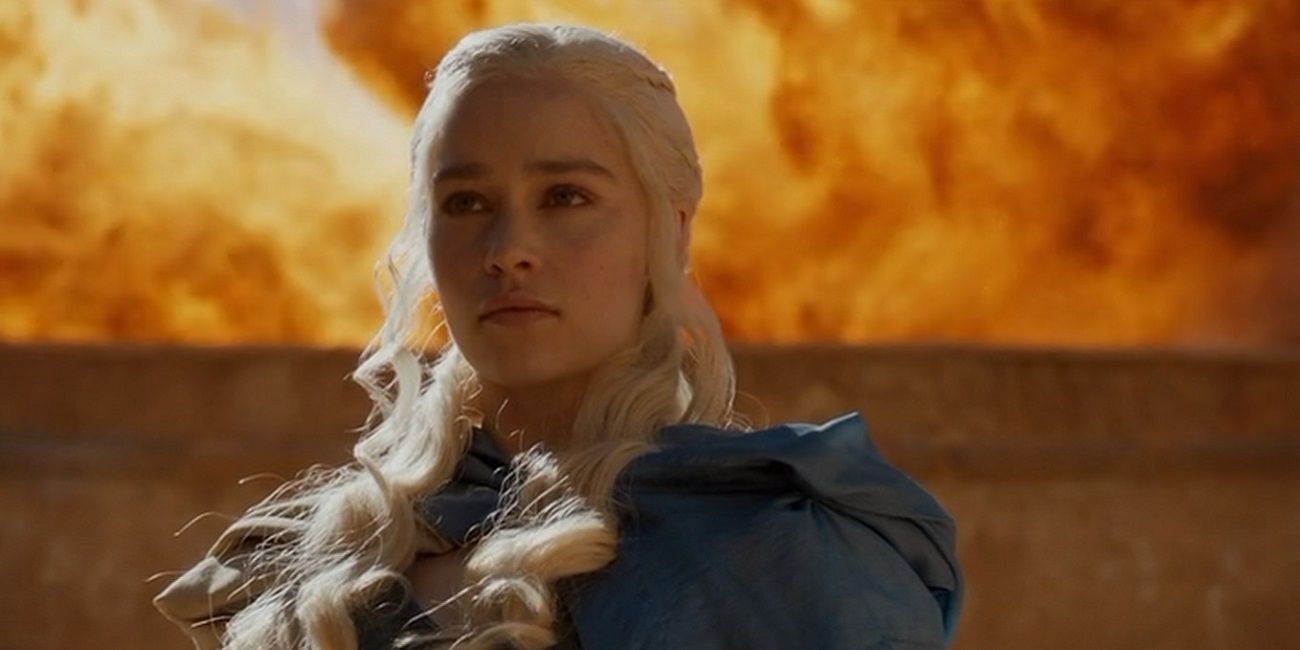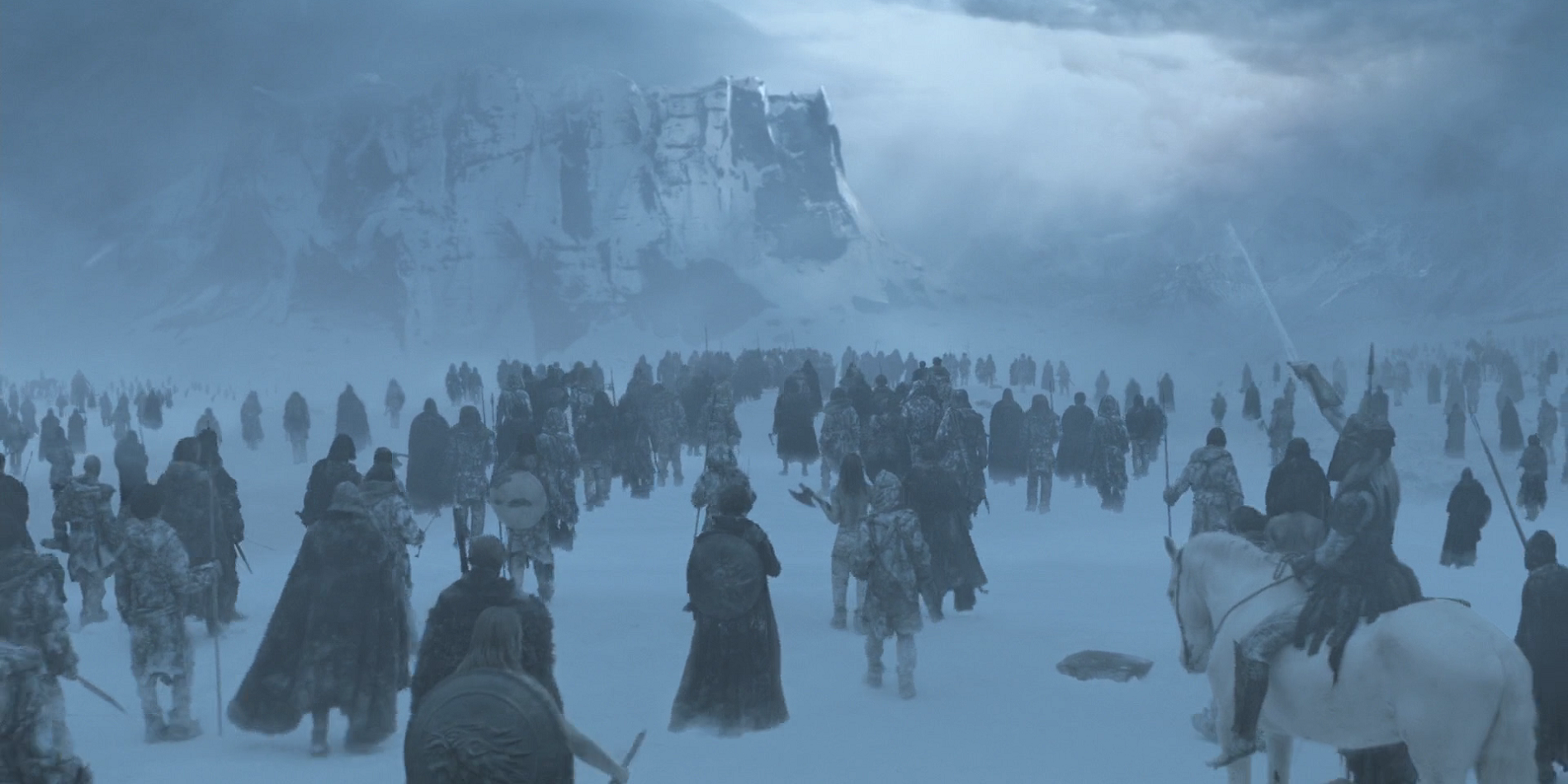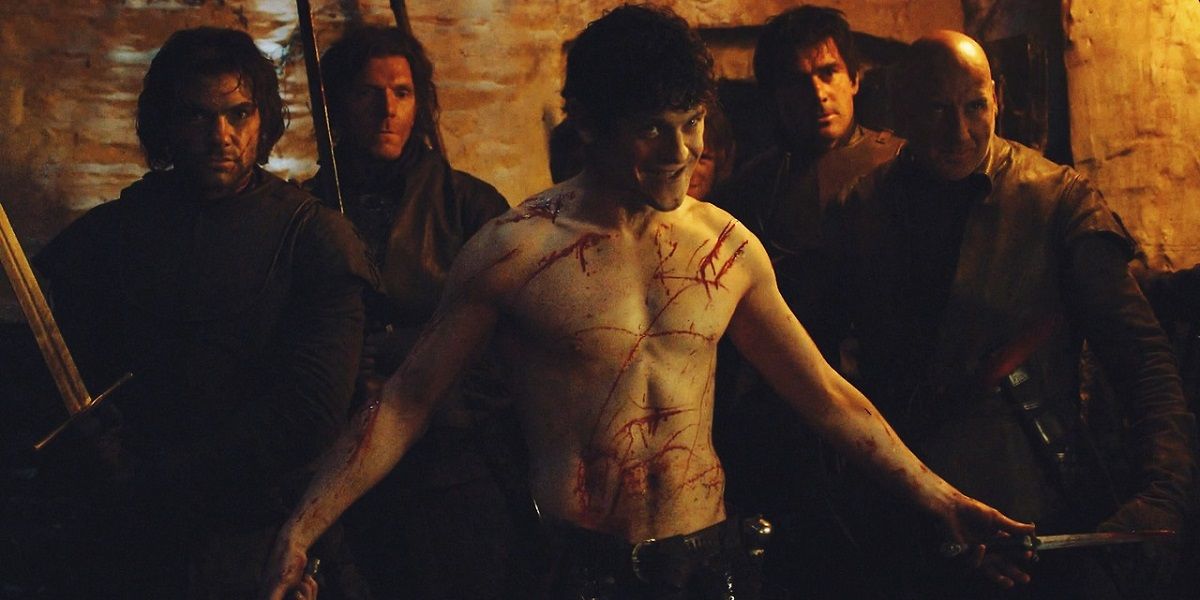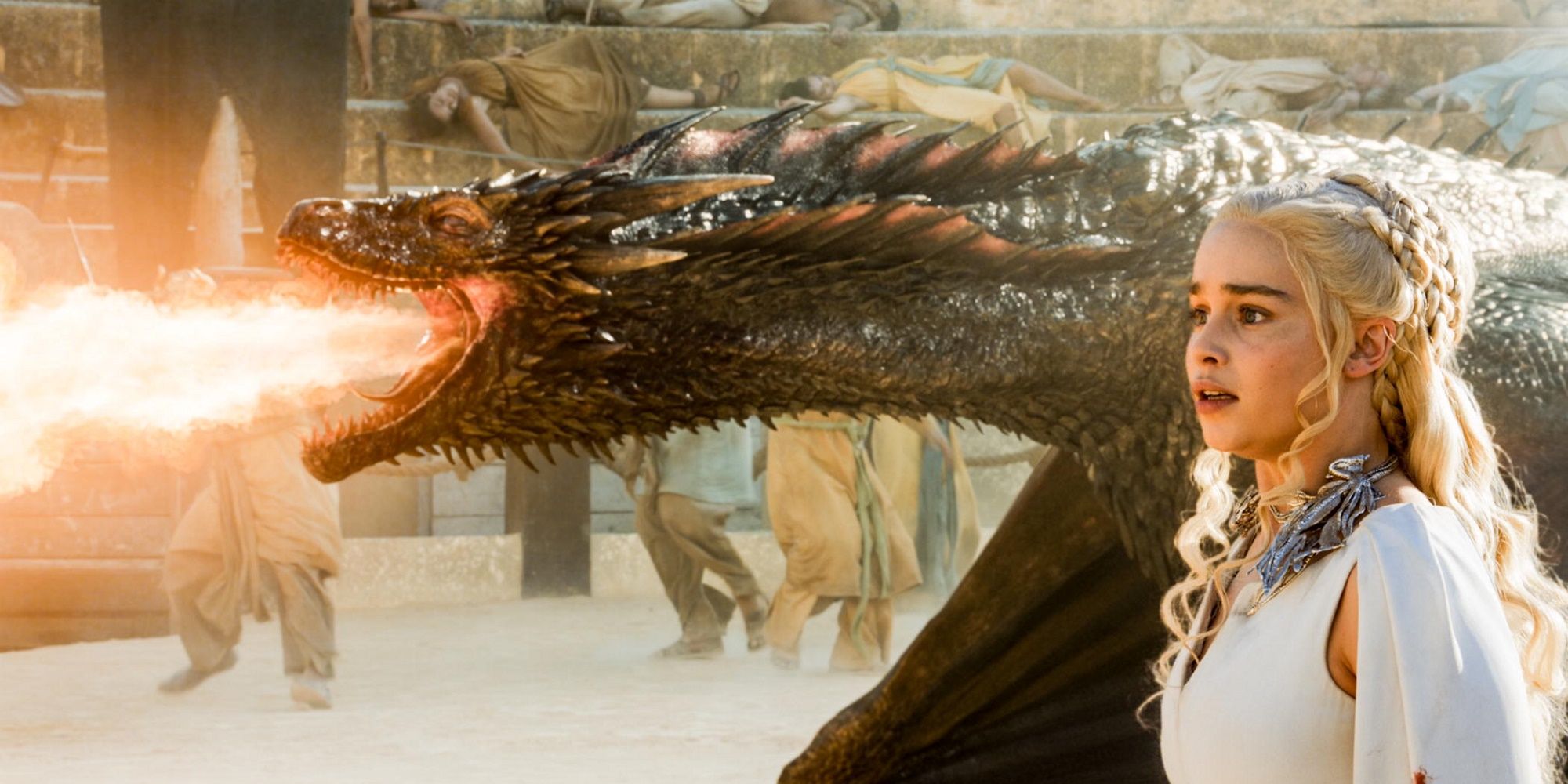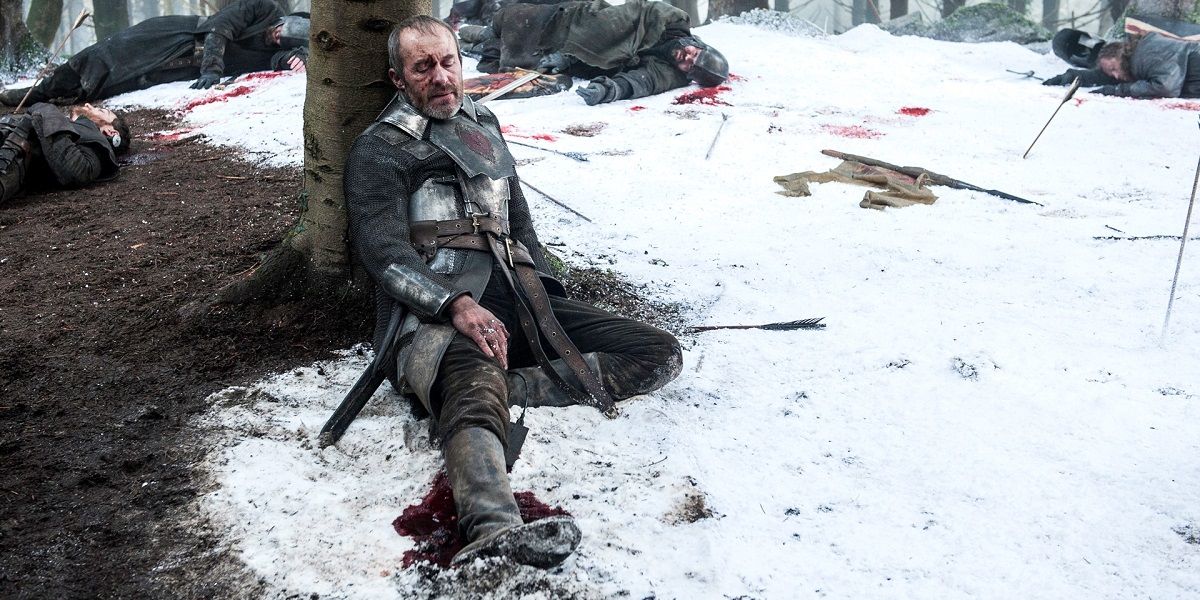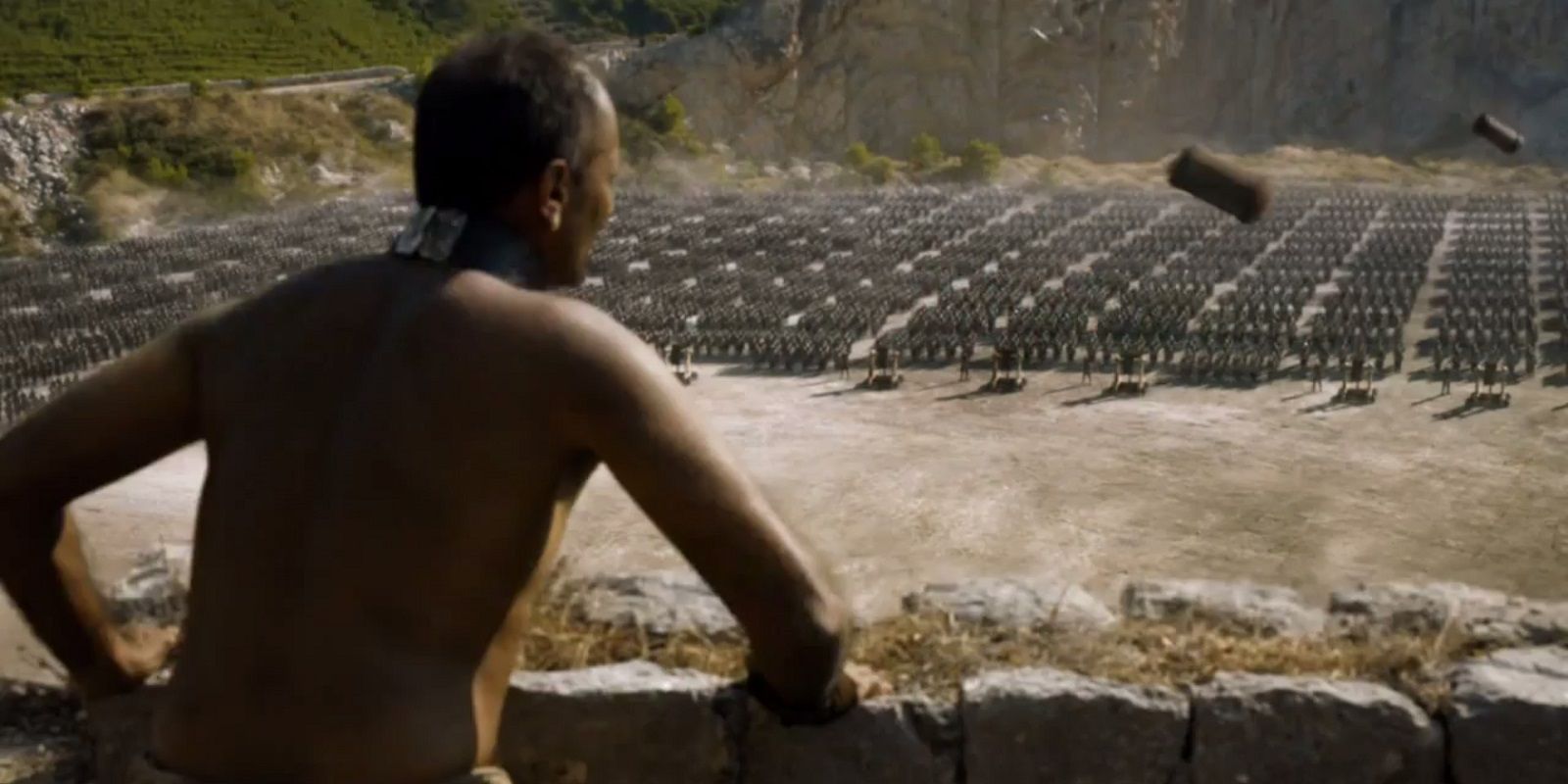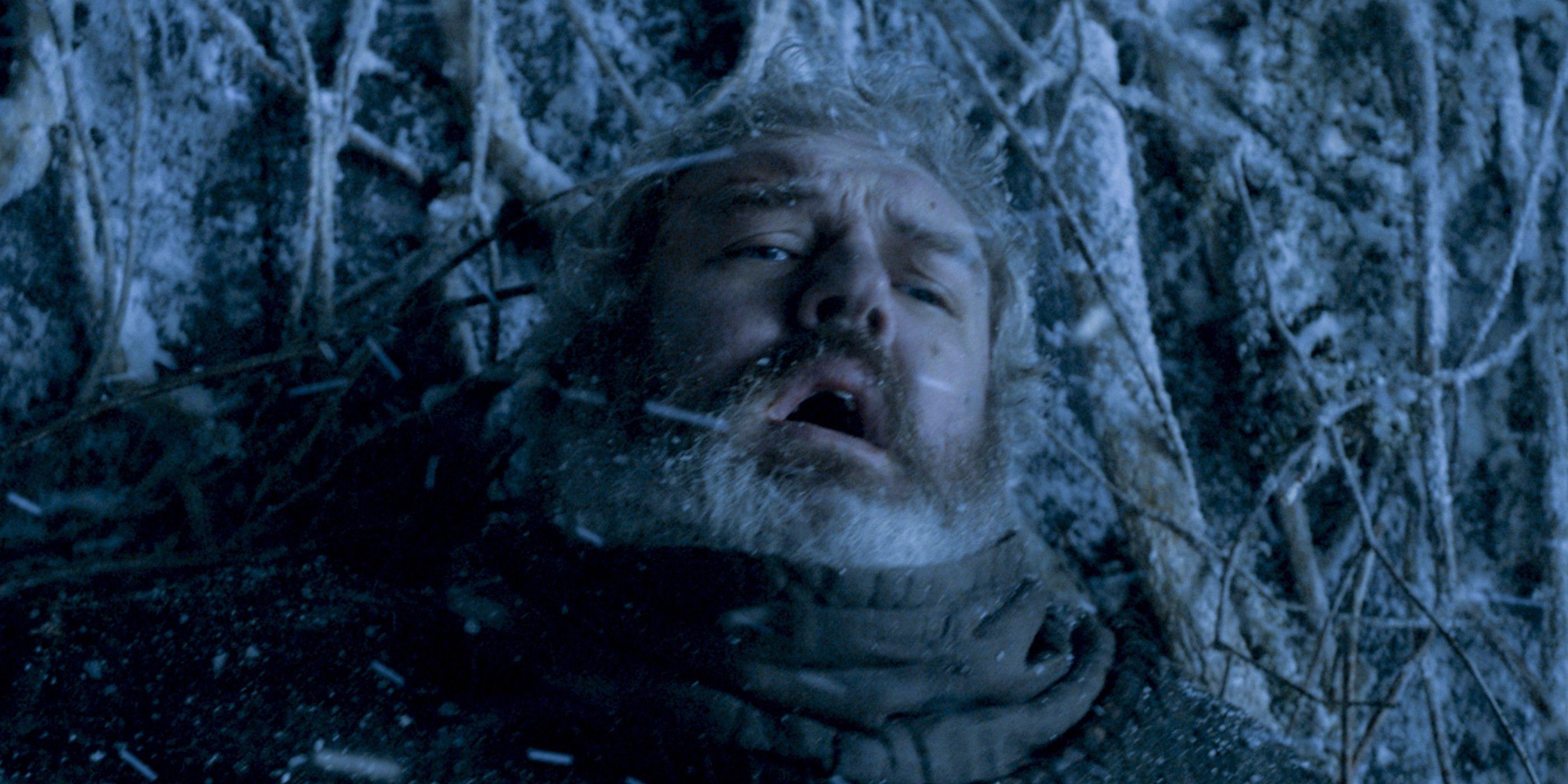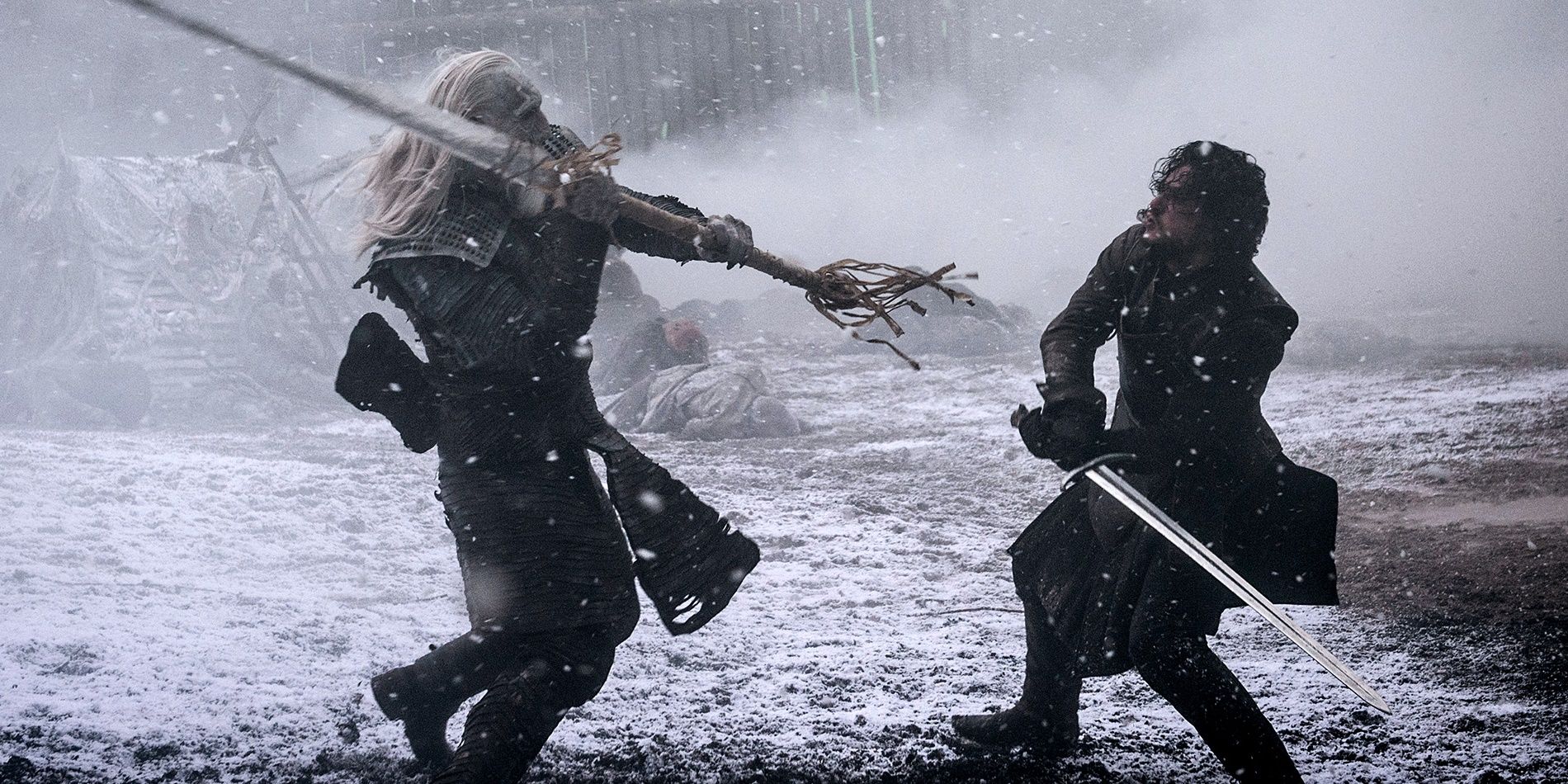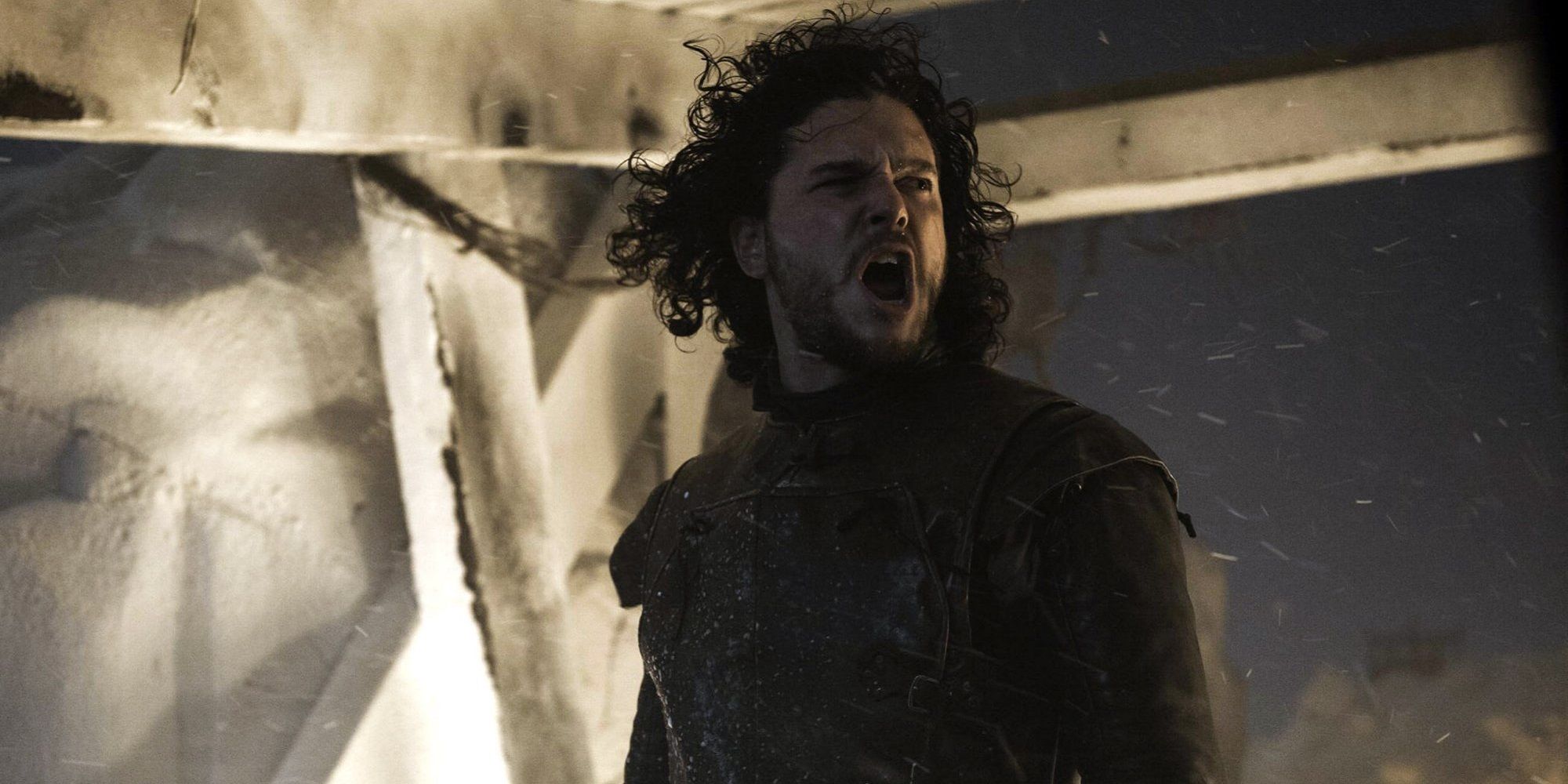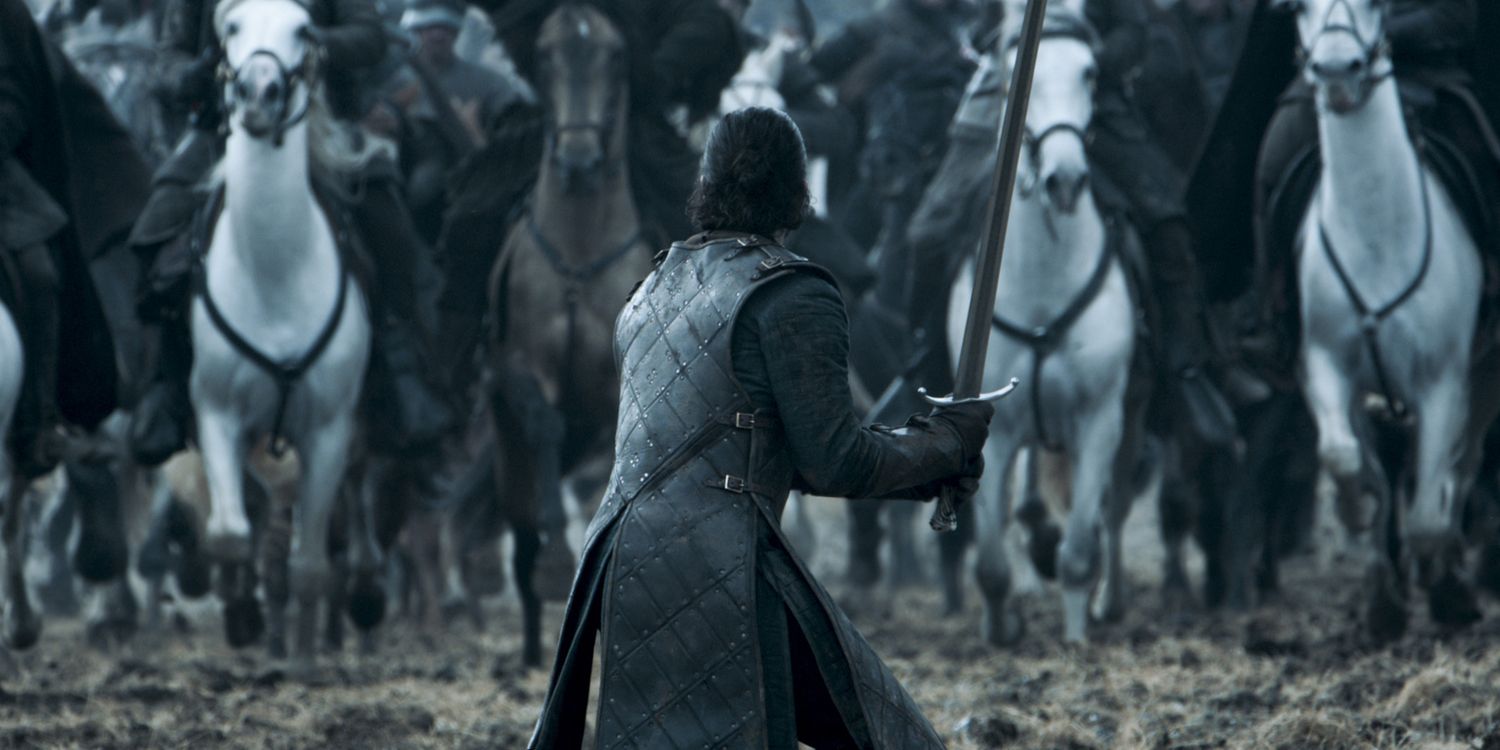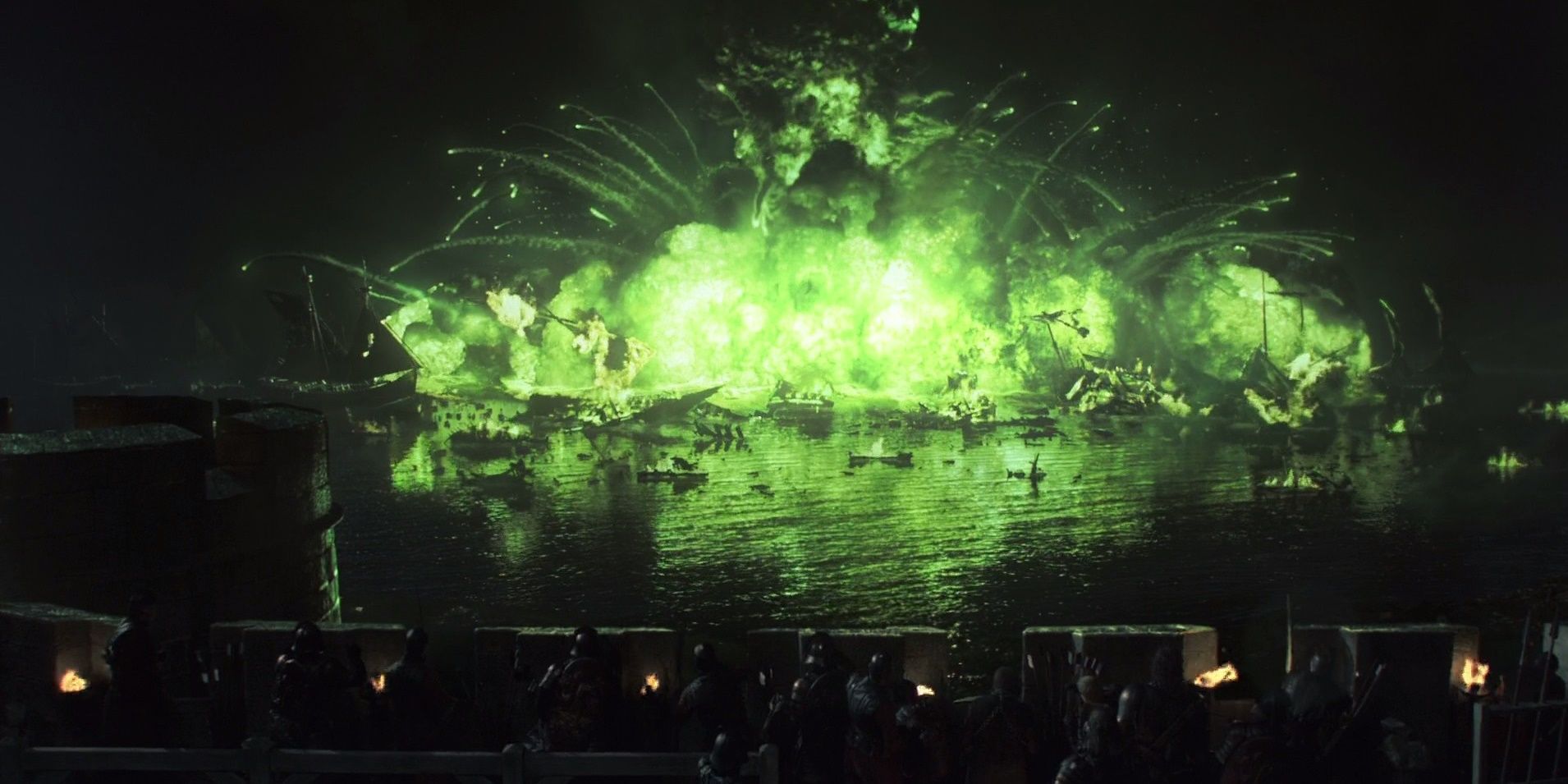[WARNING – This article contains SPOILERS for Game of Thrones season 6.]
One of Game of Throne’s defining strengths is how it balances grand, world defining conflicts with the smaller character beats and personal storylines that draw the audience in and fully realize the show’s universe. Those quieter personal conflicts are wonderful and the show would lack a good deal of substance without them, but what truly sets Game of Thrones apart is what it does better than any television program before it: large scale violent conflict.
Thrones isn’t the first swords and sandals series to fill our DVR’s and it won’t be the last, but what it has achieved in terms of action cinematography and choreography is unprecedented. The great battles that we have seen, and the battles that we will see (in the wars to come) are unique to this particular series. Its far ranging plots (and budget) have uniquely equipped the show to bring us the sort of action once reserved for the big screen. In honor of Sunday's giant – and expensive – “Battle of the Bastards,” this is a list of the best battles the show has given us so far.
Despite Game of Thrones' uniquely large budget, it does occasionally suffer from problems of scale. CGI and extras are expensive (they have to save some money for the Dragons too!), horses are tough to manage, and forty day shoots don’t grow on trees. As a result, Game of Thrones sometimes uses a reduced number of combatants in a small space to stand in for a large, catastrophic conflict. As such, this list broadens its scope beyond the show's few gigantic “army vs. army” engagements, to include all manner of sieges, sackings, attacks, uprisings, and riots.
Here's Screen Rant's take on the 17 Best Battles In Game of Thrones
17. The Fall of Winterfell
The fall of Winterfell wasn’t much of a conflict at all. It was actually a covert seizure of Winterfell by Theon Greyjoy, the linchpin in his plot to regain the respect of his countrymen and his father. In order to do so, he feigned an attack at nearby Torren Square. When the Stark forces left Winterfell to answer the call, he and his small group scaled the castle walls and compelled Bran Stark to cede the castle. It worked.
This…event may have lacked the high volume bloodshed of other armed conflicts, but it was as consequential as any. As we will note many times on this list, the best battles in Game of Thrones have implications that stretch far beyond the initial bloodshed. In the case of The Fall of Winterfell, this was the moment that pushed Bran from his home, beginning his journey to becoming the time traveling all-seer he is now. This was also the conflict that saw Theon kill Ser Rodrick and butcher an innocent family so he could pose two dead bodies as Bran and Rickon Stark, his captives that he let escape, in a moment of typical pre-flaying Theon folly.
Somehow, we still felt bad for Theon when he was later a captive of the Dreadfort, but writing this, we can’t remember why.
16. The Sack of Winterfell
The Sack of Winterfell was a substantial turning point in the show’s early going; it introduced us to Roose Bolton’s Bastard, Ramsay Snow (if only we knew then what we knew now), and drastically altered the fate and virility of one Theon Greyjoy.
After hearing news of the seizure of Winterfell, Roose Bolton informed Robb Stark that his bastard son could ride on Winterfell with a modest force and reclaim the castle for the King in the North. Robb gave him permission, requesting only that Theon be kept alive so he could personally see to the traitor's execution. He suggested that Bolton forces offer amnesty to any Iron-Born forces except Theon, incentivizing them to turn on their weak leader.
That is exactly what happened – the Iron Born incapacitated Theon themselves, and forfeited Winterfell to the Bolton forces. What happened next was unsurprising in retrospect. Ramsay’s forces flayed many of the Iron Born alive, Ramsay took Theon as his personal torture toy, and the Boltons set Winterfell aflame, seemingly killing any civilians inside the walls.
Theon, like us, would never be same.
15. The Battle of Yunkai
The Battle of Yunkai was Dany’s second attack against the cities of Slaver’s bay, and it was highlighted by a fine piece of strategy concocted by her newest adviser, Daario Naharis. With her substantial army (numbering in the thousands at that point), Dany could have mounted a straightforward siege of the city -- and lost a significant number of men in the process.
Instead, Daarhio proposed a covert operation that entailed him and one or two others sneaking through the city’s back gate, opening up the front gate, and allowing Dany and her army to walk right in.
This episode signaled the real arrival of Daario Naharis (the character, the actor would change after this), who killed his officers in the Second Sons and joined forces with Daenerys. After Daario, Ser Jorah, and Grey Worm sneak in the back gate and kill the guards, they were ambushed by more substantial forces. Despite being outnumbered, the three easily dispatched their enemies and help take the city for their queen.
14. The Sack of Mole’s Town
The Sack of Mole’s Town was a “battle” between Tormund’s Wildlings and the free folk inhabiting the town. Battle is a generous term here; the Mole’s Town residents battled the Wildlings in the same sense a nail battles a hammer. It didn’t take them long to be murdered entirely, save for Olly.
The Wildlings also attacked a nearby brothel, killing some Night’s Watch brothers in the process. This was the conflict that endeared Ygritte – Jon Snow’s Wildling girlfriend – a bit more to audiences, after she spared the lives of Gilly and her Son during the raid.
Writing about events like the Sack of Mole’s Town and the Fall of Winterfell, we were reminded that some of the sympathetic characters that have becoem fan-favorites were at one point horrible people. Tormund, who audiences are actively shipping with Lady Brienne at this point, led this massacre of innocents. Theon, in The Fall of Winterfell, murdered an entire family in cold blood, for personal gain. It’s a testament to the show’s nimble storytelling that characters are able to commit atrocious war crimes and two seasons later become beloved by the masses.
13. The Raid on Craster’s Keep
The Raid on Craster’s Keep was a good example of extremely compelling storytelling done with limited scope, as far as combatants and effects go. Jon led a band of Night’s Watch brothers to retake Craster’s Keep from the mutineers, who – unbeknownst to Jon – are also holding Bran and co. hostage in a hut outside the keep.
The assault, besides featuring some very satisfying action, also adeptly moved through story points without ever feeling contrived. Locke betrayed his brothers in Black, trying to flee the raid with Bran as his own hostage; Bran responded by warging into Hodor and breaking Locke’s neck – a new ability for the character.
Jon’s showdown with Karl, the leader of the mutineers, featured quality on screen storytelling as well (wrestling fans call this “in ring storytelling”), as their characters divulged information and were developed further through just their fighting styles and dispositions. Their scrap ended in memorable fashion, with Jon running his broadsword directly in through the back of Karl’s head (and out through his mouth.)
The raid featured one of those signature frustrating Game of Thrones moments, where a pair of characters the audience desperately want to reunite barely miss each other like ships passing in the dark. Bran and Jon, finally in the same exact spot after seasons apart – and Bran decided it best to make himself unknown so he could continue his quest for the Three Eyed Raven.
12. The Battle of The Green Fork
The Battle of the Green Fork was an off-screen conflict that took place during the infamous ninth episode of season one, Baelor. Despite taking place without the cameras rolling, the battle was a crucial piece of military strategy, one that largely tipped the scales toward Robb Stark’s campaign in The War of the Five Kings.
The battle itself was a ruse, as a marginal Stark force of 2,000 men engaged the full force of the Lannisters only to draw them away from the real consequential action – the bulk of King Robb’s army outflanking them to engage Jaime Lannister in the Battle of the Whispering Wood (another off screen conflict and decisive Stark victory).
Robb’s victory over Jaime left the rest of the Lannister forces outflanked and outmanned, so Tywin retreated to Harrenhall to regroup. The show, unable to adequately film such a giant conflict for whichever reason, handled its limits expertly. Tyrion Lannister was tapped in the battle to lead a vanguard of hill tribes and Vale forces that he recruited, becoming sort of an audience proxy in the lead-up to battle. Tyrion was the audience’s eyes; unfortunately, he was knocked unconscious accidentally during the beginning of the clash. When he – and we – awoke, the bloodshed was over. All that was left was to count the dead.
11. Sack of Astapor
The sack of Astapor was Danaerys’ first military action in Slaver’s Bay, and a crucial turning point in her storyline. Dany traveled to Astopor with the explicit purpose of acquiring The Unsullied, a slave army known as one of the finest fighting forces in the Game of Thrones world; problematic, as Westeros is not as amenable to slavery as the cities of Slaver’s Bay (subtle name), and because Dany herself objected to the practice.
So, Dany devised a plan to purchase the slave army for the cost of one of her dragons. Then, once they declared loyalty to their new Queen, Dany instructed The Unsullied to kill every Master in Astapor - and unchain every slave. When Krazynys Mo Nakloz – the master that traded an army for a dragon – became unnerved by Drogon's wildness, Daenerys' most powerful beast roasted The Good Master alive.
It was the first time we had seen a dragon exercise its considerable power – in a series loaded with iconic moments, this is among the most memorable. It was also the moment Dany transformed from a plucky upstart with a few dragons into a veritable force boasting an army of thousands.
10. Battle of the Fist of the First Men
The best conflicts on Game of Thrones are jaw-dropping not just because of stunning visuals, but because they advance the story in an unforeseen way. Earth shattering revelations in the show are almost always accompanied by bloodshed. Thrones, when it began, had all the hallmarks of a straightforward medieval(ish) drama, for all its quality storytelling and character development. Five seasons later, it has transformed into a full-fledged fantasy, complete with magic, resurrection, undead armies, and dragons. For all the talk early on about Game of Thrones “sexpostion,” as much new information during that transition has been delivered during violent conflict.
The Battle of the Fist of the First men did exactly that. It was the first open confrontation between men and White Walkers that we had ever seen, and showed us for the first time the true scale of the army of undead north of the Wall. The Walkers overran the Night’s Watch at the Fist, killing hundreds in the process – although Ghost, Jon’s direwolf, did kill a White Walker during the battle. This might not have been much of a even fight, but it was the moment the White Walkers stopped being a vaque, unquantified thread and became something much more inevitable. And terrifying.
9. Assault on the Dreadfort
In one of the most heartbreaking moments of the entire series, Yara Greyjoy led a band of fifty or so Iron-Born to rescue her brother Theon from his captor, the sadistic Ramsay Snow. She was successful, at least at first – until we saw just how broken and hopeless Theon (now Reek) had become when he outright refused to flee with his countrymen.
We also learned during the assault that Ramsay wasn’t just a psychopathic torturer, but also a capable brawler, when he handled himself outstandingly in a vicious melee -- wearing nothing but slacks.
The assault on the Dreadfort furthered the development of the Ramsay character, but also showed us just how insane Theon had become at that point. By any metric, Yara successfully rescued her brother – but thinking it could only be another mind game, Theon bit his sister and returned to his cage among the other (actual) hounds. Ramsay sicced said hounds on the remaining Iron Born after the scuffle and that was that.
Sailing away, Yara spoke to just fractured Theon had become, telling her troops, “My brother’s dead.”
8. Uprising at Daznak’s Pit
After agreeing to open the fighting pits, Dany was in attendance to watch the ceremonies with her then-betrothed, Hizdahr zo Loraq. The day turned sour though, after a large number of the insurgent Sons of The Harpy attacked, murdering spectators and waging an assault on the Queen herself. Once Dany and her Kingsguard were sufficiently surrounded and outmanned, Drogon arrived just in time to roast the attackers.
It was an impressive sequence, taking place in yet another consequential ninth episode, this one of season five. And like the best of Game’s battles, the fight at the pit jumped the story along substantially. The audience saw the return of Jorah, after being previously cast out by his Queen. We also saw the return of Drogon, and just how big – and fierce – the dragon had become; and – this is crucial – we learned that Dany can in fact ride a dragon. This last point, besides being a revealing piece of exposition, achieved something very important in the show structure – it physically relocated a character.
We have seen before that the show struggles when characters are bogged down in one place for too long (think of the quagmire in Meereen for that matter). In order for the plot to move, characters have to travel, unlock new areas, meet other characters. At the uprising in the pit, we learned Dany could ride a dragon. Perhaps just as importantly, she rode that dragon a great distance to the Dothraki sea, where she could further her – and the show’s – story.
7. Battle of Winterfell
The Battle of Winterfell was supposed to be a coronation for Stannis Baratheon – his own advisor Melisandre had seen visions of him walking the battlements of the castle after a great victory. We learned instead that visions don’t count for much, after Stannis and his depleted forces suffered a decisive loss in the battle.
Despite not meaning a whole lot on the surface – Stannis’ fumble and eventual loss changed very little in the big picture of who sits on which chair – the takeaways from the battle were numerous. Most obviously, it was the last time we saw Stannis Baratheon, who was killed shortly after the routing of his army by the Bolton forces.
While Stannis fought his losing battle, Sansa was able to escape Winterfell with Theon after being held there by Ramsay for much of the season. The sequence also gave us another instance of characters coming this close to reuniting, with Brienne and Sansa missing each other by mere moments because of all the commotion.
6. Siege of Meereen
The Siege of Meereen was part three of Dany’s liberation trilogy, and the last of the cities in Slaver’s Bay she would conquer. The prelude to the siege featured a memorable standoff between a Meereenese warrior and Daario Naharis, who dismounted the horse-riding knight and killed him in front of the entire city.
The siege itself followed much the same patterns as Dany’s other takeovers, wherein she compelled the slaves themselves to throw down their chains and take up arms in her cause. This method smartly enlists additional help in the Queen’s takeovers, while also giving the city's residents agency over their own liberation -- which supports Dany’s self-fashioned image as a breaker of chains, not a conqueror.
This battle was the culmination of a long journey for Daenerys. It marked the moment she would have to – at least temporarily – stop conquering/liberating, and start ruling. It also marked the beginning of a nearly two-season long slog in Meereen that saw one of the show’s most beloved characters lose some of her momentum.
5. The Raid at The Weirwood
The Raid at The Weirwood is worth noting if only because it gave us substantial plot foreshadowing and one of the most crushing moments in Game of Thrones history. In the raid, the White Walker's army attacked Bran, Meera, and co. in the weirwood cave after Bran was touched by The Night King in a vision. We also learned that The Night King’s marking on Bran allowed him to locate Bran’s hideout and bypass the protective magic that had kept them safe until then.
As such, the undead army quickly move to Bran’s location and attack. Bran and Meera escape, although the Three Eyed Raven, Leaf, and Bran’s direwolf suffered more gruesome fates.
We are obviously burying the lede here – the real impact of the Raid at The Weirwood came when Hodor, the much-loved innocent simpleton – was killed holding off wights so Bran could escape. During the sequence, Bran is shown warging into Hodor (in the past or present, which still is the subject of some debate.) In the show's past, we watch a young Hodor’s mind shatter under Bran’s power, explaining his condition over the past few seasons. In the show’s present, poor Hodor was being torn apart by the undead, in one of the most upsetting moments this consistently upsetting show has ever given us.
4. Massacre at Hardhome
If the Battle at the Fist of the First Men showed us some of why we should be terrified of the White Walkers, the Massacre at Hardhome terrified us completely. Jon Snow and Tormund sailed to the wildling outpost to recruit however many they could to return to Castle Black and take shelter on the other side of the Wall, only to be ambushed by the now overwhelming force of the undead army. A massacre it was, as the free folk suffered catastrophic casualties at the hands of the White Walkers.
Still, for something so horrifying, the battle was stunning in its execution. The episode was the second directed by Miguel Sapochnik, and what he did with the action was nothing short of masterful. Insane, suffocating winter imagery. Long tracking shots dragging viewers through disorienting action. Iconic images like a White Walker lieutenant walking through flames, or a Giant erupting from a hut, draped in the undead. Thousands of wights hurling themselves off a cliff, only to rise and attack again. And finally, in one of the show’s most famous shots, The Night’s King reanimating the casualties of the massacre in front of Jon Snow – a taunt, highlighting just how fruitless efforts to oppose the Walkers would be.
Just as importantly, we learned at Hardhome that Valyrian steel can seemingly kill the White Walkers, as Jon destroys a lieutenant in combat – something we hadn’t seen on screen before.
3. The Battle of Castle Black
Oh, to return to a time when the scariest thing north of the Wall was a bunch of Wildlings. The Battle of Castle Black was the culmination of a season-long lead-up to conflict between the Night’s Watch and Mance Rayder’s army of free folk.
The episode “The Watchers on The Wall” gave us Night 1 of the conflict, in one of the series’ only installments to take place entirely in one location. The battle – despite seeming less important now than it did at the time, given the circumstances – was the most epic the show had yet shown us. As Mance’s considerable forces (including giants riding mammoths) attacked the Castle from the North, Tormund and Ygritte’s smaller party attacked from the south. Battle raged through the night, but the Wildings eventually retreated, if only to regroup.
As we said, the conflict between Wildlings and The Night’s Watch might seem less relevant now, given the emergence of a much graver threat. But the Battle of Castle Black was important for Jon Snow, as his performance led to his election as the new Lord Commander of the Night’s Watch. It moved Tormund (eventually) into an allied position with the Northerners and extinguished the threat of Mance’s army. And it was cinematically one of the most impressive pieces in the entire series.
2. The Battle of The Bastards
Sunday night's long awaited showdown was nearly epic enough to take the number one spot. Much was made about the resources that went into the production of this episode, in terms of time, money, and raw man power. With all due respect to the show's budget, we aren't sure you can put a price on catharsis -- and the well-earned audience relief that this episode provided was worth every penny.
Form a purely filmic standpoint, the Battle of The Bastards featured a number of stunning sequences -- from Rickon's Run (#zigzag) to the near suffocation of Jon Snow beneath a mountain of bodies, this episode framed combat in a way that not only was new for a TV show but was just plain new. Consider the way horses were filmed in this battle. As combatants made their way across the screen, animals slammed into each other like cars out of control on the free way. The Knights of the Vale rode over Bolton Troops like bowling balls knocking over pins. There was a pulverizing physicality to the whole battle that was like nothing we've ever seen before.
If that wasn't enough, the episode ended with one of the most satisfying deaths in Game of Thrones' history, and saw Sansa -- like other female leaders in the show -- emerge as a true heavyweight for the wars to come.
1. The Battle of the Blackwater
The Battle of the Blackwater was Game of Thrones’ first large-scale war set piece, and it was substantially breathtaking to behold. The naval conflict included more visual effects than had ever been on the show, and the episode – “Blackwater” – was the first to dedicate all sixty minutes to only one storyline.
The battle itself was between Stannis Baratheon’s army and the Lannister forces of King’s Landing. Recounting the events of the fight in this space is most likely unnecessary; the episode was a turning point both for the series (in terms of scope) and many of the characters, and as such has been carved into the collective audience’s memory. Tyrion’s heroism during the battle cemented his role as perhaps the fan-favorite character on the show, and Joffrey’s cowardice only made us hate him more. Role players like Bronn, The Hound, and Podrick Payne all had memorable action moments during the battle – and that wildfire explosion in the bay is arguably singular amongst visual effects in TV history.
There are have been other, bigger battles since this one, and there are certainly more to come. But the Blackwater was the first time Game Of Thrones truly flexed its muscles, showing viewers action of a magnitude unmatched by any other TV series in history.
---
What was your favorite battle sequence in the series thus far? Can the war with the White Walkers possibly live up to expectations? Sound off in the comments section.

